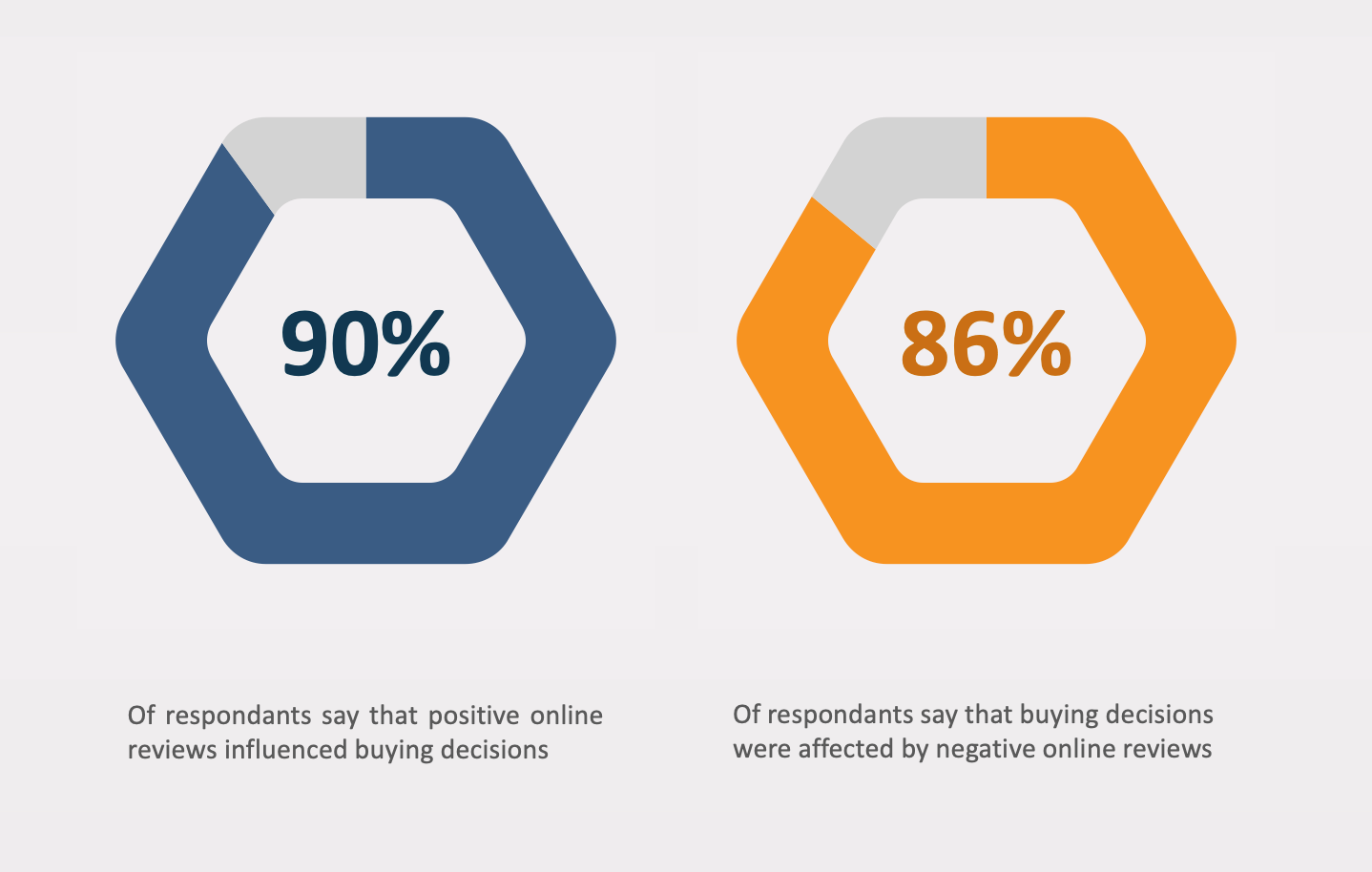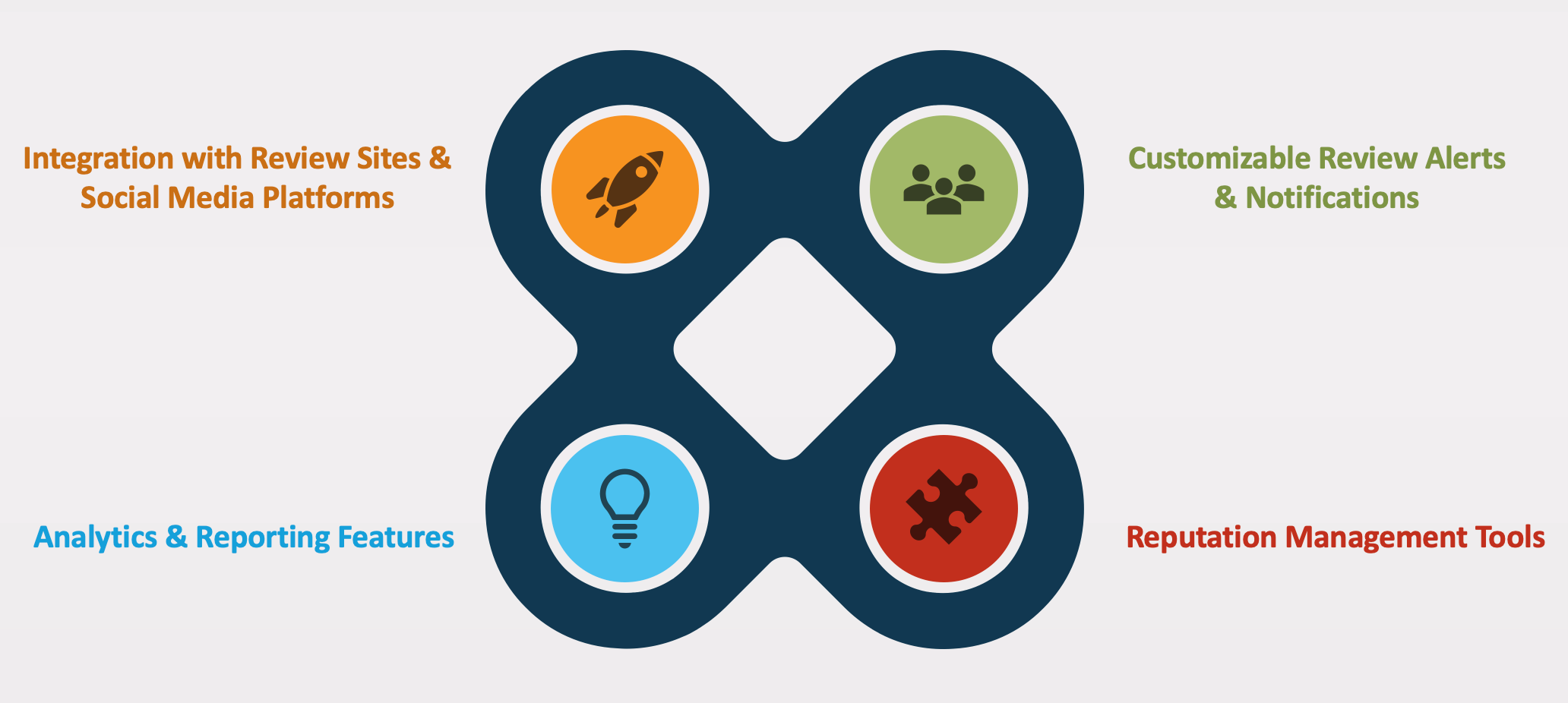Do you remember the days when you had to buy anything and everything in person? Yes, that was before the internet existed. Today, we’re all well aware of online shopping, have our favorite stores to shop at, and expect to be able to purchase something in a matter of a few clicks.
But with online shopping comes online customers. And with customers come experiences and reviews. Collecting and managing reviews is a massive part of reputation management today. It helps generate authentic feedback about your brand. And we all know how potent word-of-mouth can be. So, what’s the best way to manage customer feedback? Simple – invest in review management software.
What is review management?
Review management is a vital component of online reputation management. Companies need to be able to manage their reviews by praising positive reviews and addressing negative ones. This allows brands to become more agile, responsive, and relevant to consumers. Review management includes tasks such as asking customers to provide reviews, responding to reviews (both positive and negative), and monitoring them.
Why does your company need review management software?
There is a common misconception that only large corporates require review management software. This is untrue. Brands that have established themselves online (close to every business today) should invest in review management software. Why? Here are our top reasons:
It helps build, maintain, and improve your brand reputation
As we discussed before, you can see that consumers believe in specific brands and stay true to them, provided they have positive experiences with that company. Once that happens, word spreads about that brand, and more people are privy to it. As a result, positive experiences are imperative to maintaining a good reputation. Review management software lets you catch all reviews, respond appropriately, and quickly develop a solid reputation management implementation strategy.
It saves your team time and effort
Business owners and staff need more time to manage every customer review online manually. The internet is a vast place, and tools like review management software help you easily manage customer feedback. This tool can help you request feedback, schedule appointments, collect reviews, respond to reviews, and more. Combining all communications into one inbox allows you and your team to easily manage conversations and customer feedback without confusion or manual effort. It’s a must for modern-day businesses.
It boosts your online ranking
You may have listened to many marketing experts about SEO (search engine optimization) and its importance to online brands. Well, one great thing about review management software is that it aids your overall ranking online. How? Brands with more reviews will rank higher on search engine platforms like Google Maps. This means more people can find your business, read reviews about your brand on Google, and book appointments with you or visit your store in minutes. SEO is a big part of any online marketing strategy, and review management can help boost your rankings in no time.
Benefits of Review Management Software
According to Finances Online, a study showed that positive and negative reviews can impact a business’s reputation and success. In this statistic, Zendesk shares that 90% of respondents in a study said that positive online reviews did influence their buying decision. 86% of respondents said negative online reviews also affected buying decisions.

Design Source: PresentationGO.com
These significant percentages show that consumers read and pay attention to online reviews before purchasing a particular product or service. This is why review management is essential to a company’s success.
Other than the benefits we already discussed, such as time-saving and SEO improvements, review management software also aids businesses in other ways:
It helps you stay on top of things
Review management software helps you understand what is said about your company online. Moreover, it allows you to promptly monitor and respond to reviews – helping you stay engaged with customers and handle any challenging situations in a timeous fashion. This is nearly impossible to do manually – it would take too much team time and effort. With review management software, customer feedback is managed effortlessly.
Allows you to filter through content
As we’ve seen in the study above, reviews matter to consumers. Many people insist on reading reviews before purchasing a certain product. But with this comes things like fake reviews. Luckily, with review management software, you can filter through such reviews and ensure they are managed efficiently. After all, you want customers to see genuine reviews only. This will enable them to make a relevant decision about your brand and trust it from day one.
Helps you generate UGC naturally
We all know that UGC (user-generated content) is a powerful thing. It’s all about advocacy when it comes to marketing. And UGC forms part of that. Consumers love hearing from other consumers about brands. And reviews are just that. Positive reviews are UGC that help others understand more about your business, products, and services directly from customers. This type of content can also be repurposed for social media or blog content in your marketing plan.
Tips for Effective Review Management
Tip #1: Find and select fundamental review sites
The first tip is all about the discovery phase in review management. You should take some time upfront to identify review sites that would be the most effective for your business. You can choose review sites that are the most influential to your business, the most relevant to your specific industry, and where consumers will search for products and services like yours.
Having a key list is more effective than trying to manage hundreds of sites with little to no relevant conversation with your brand. Once you have a list of relevant review sites, it’s time to move on to the next step.
Tip #2: Claim your business on all selected review sites
It’s vital to claim your business on each review site you’ve selected to manage. This allows you to gain authority over your company page and helps you manage the site quickly, with no red tape. The one thing to remember here is that each review site may work differently from the next so the claiming process may vary. It is quite a bit of work upfront, but once your business page is claimed, running your review management strategy will be much simpler.
Here’s an example of how to add or claim your business profile on Google.
Tip #3: Build a practical review management strategy
Once you have your list of suitable review sites for your business, it’s time to create a solid and practical review management strategy. What is this, exactly? A review management strategy is essentially a plan to help you efficiently plan and manage reviews when they arrive. Details of the review management strategy include:
- Which review sites will you monitor?
- How often will you assess each website?
- Which team members will be responsible for reviewing?
- Which reviews will you respond to?
- How will you respond to positive reviews?
- How will you respond to negative reviews?
- How will you deal with fake reviews?
- Which platform will you use to help you review these sites?’
Your review management strategy will be complete once you have answers to these questions. Sticking to it will help you become more responsive and robust to consumers.
Tip #4: Detect, analyze, and remove fake reviews
We all know that businesses receive positive and negative reviews, with the latter being tough to deal with. But with a good review management strategy, negative review responses can make a huge difference to consumers’ perception of your company. But not all reviews are positive and negative.
Some reviews are, in fact, fake. These are generally reviews that display negativity toward your brand. As a result, they must be removed as soon as possible. There are many guides to help you spot fake reviews, and you can leverage a review management software tool to help you manage such reviews timeously.
Tip #5: Purchase and implement review management software
The last tip on this list is to purchase and use a review management tool. This helps you monitor reviews across multiple platforms and automate some of the process. The best review management software allows you to collate all data into one dashboard, giving you instant visibility. Below are a few core features you should have within your review management software.
Features to Look for in Review Management Software

Design Source: PresentationGO.com
1. Integration with multiple review sites and social media platforms
Your review management software tool should be able to integrate with social media platforms such as Facebook, Twitter, Instagram, etc., as well as other review sites. This will allow you to get clear visibility of all reviews in one consolidated dashboard. Once you have this, you’ll be able to respond, flag, and manage all reviews from multiple channels within one platform. It makes review management simpler for you and your entire team. It also removes all manual effort, as you won’t have to log into several platforms to view reviews.
2. Customizable review alerts and notifications
It’s crucial to get instant review notifications so that you and your team can respond to reviews faster. The quicker the response, the higher chance of customers being impressed – even if it’s on a negative review. Some of the best review management software takes this feature to the next level by allowing you to customize review alerts and notifications. This way, you can manage reviews in whichever way you prefer in whatever timeframe you find best for you.
3. Analytics and reporting features
Measurement is one of the most important ways to understand if your review management strategy is taking shape and working for you. Any good review management software tool should have reporting and analytics features. If it does, you can pull reports showing how many positive and negative reviews you received across each channel. It’s also a good idea to set yourself some KPIs (key performance indicators) to measure success. Remember to pull reports regularly to ensure your efforts are effective for your brand reputation.
4. Reputation management tools
Speaking of reputation, the last feature of your review management software should be reputation management tools. This should be tools such as the measurement of likes on social media, your overall presence in social and industry forums, mentions in blog articles, follower counts, local listings, etc. This is all about the publicity of your business’s presence online. You want to be able to constantly measure, monitor, and optimize your overall publicity, and your review management tool should take care of this.
As you can see, review management should be a pivotal part of business in 2023. It can be the difference between a good and a great experience for your customers. The Gleantap team understands this and believes in providing clients a modern and best-in-class customer review management software.
This intelligent review management tool helps you analyze reviews, collate and respond to them all in one place. You can keep the conversation going with customers via email or two-way text. Measuring your review activity is so simple, with an insight dashboard at the ready. And Gleantap integrates with other platforms, which means you won’t have to worry about switching operating systems. It’s the perfect review management solution for businesses of any size.
If you’re ready to learn more about review management with Gleantap, feel free to schedule a demo with our team today.
Get the full story here:



2 thoughts on “Stay on Top of Customer Feedback with Review Management Software”
Comments are closed.